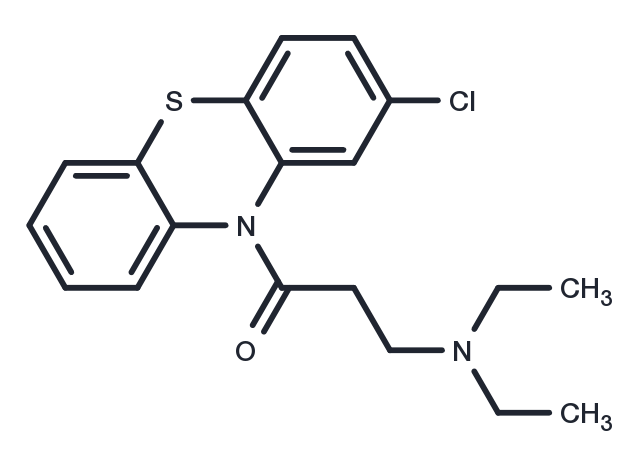Powder: -20°C for 3 years | In solvent: -80°C for 1 year


Chloracyzine can produce a decrease in myocardial oxygen consumption accompanied by a reduction in coronary blood flow preceded by transient coronary dilatation. It produced an insignificant increase in arterial pressure; heart rate increased slightly in the open-chest experiments but not in the isolated heart.

| Pack Size | Availability | Price/USD | Quantity |
|---|---|---|---|
| 25 mg | 6-8 weeks | $ 1,520.00 | |
| 50 mg | 6-8 weeks | $ 1,980.00 | |
| 100 mg | 6-8 weeks | $ 2,500.00 |
| Description | Chloracyzine can produce a decrease in myocardial oxygen consumption accompanied by a reduction in coronary blood flow preceded by transient coronary dilatation. It produced an insignificant increase in arterial pressure; heart rate increased slightly in the open-chest experiments but not in the isolated heart. |
| Synonyms | Chloroacizine, Chloroacizin, Chlorazicine, Chloroacyzin |
| Molecular Weight | 360.9 |
| Formula | C19H21ClN2OS |
| CAS No. | 800-22-6 |
Powder: -20°C for 3 years | In solvent: -80°C for 1 year
You can also refer to dose conversion for different animals. More
bottom
Please see Inhibitor Handling Instructions for more frequently ask questions. Topics include: how to prepare stock solutions, how to store products, and cautions on cell-based assays & animal experiments, etc.
Chloracyzine 800-22-6 Chloroacizine Chloroacizin Chlorazicine Chloroacyzin inhibitor inhibit
